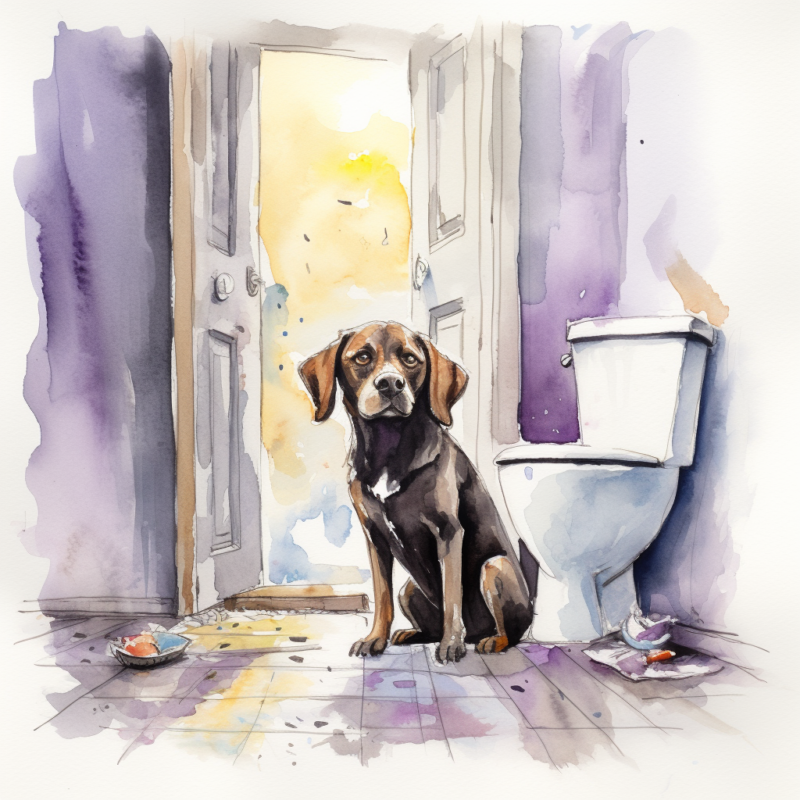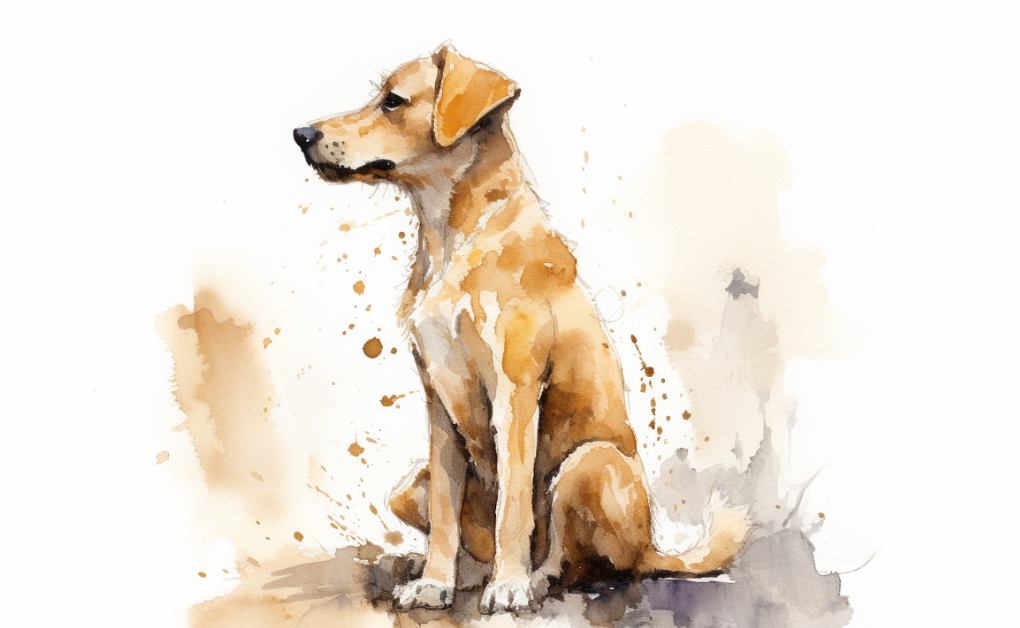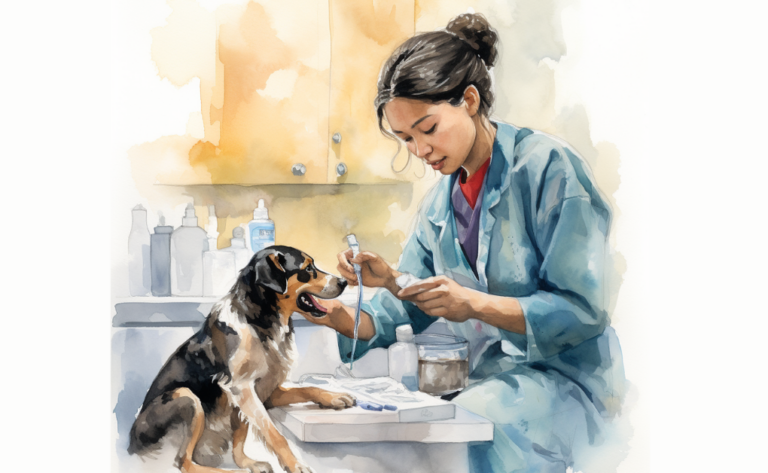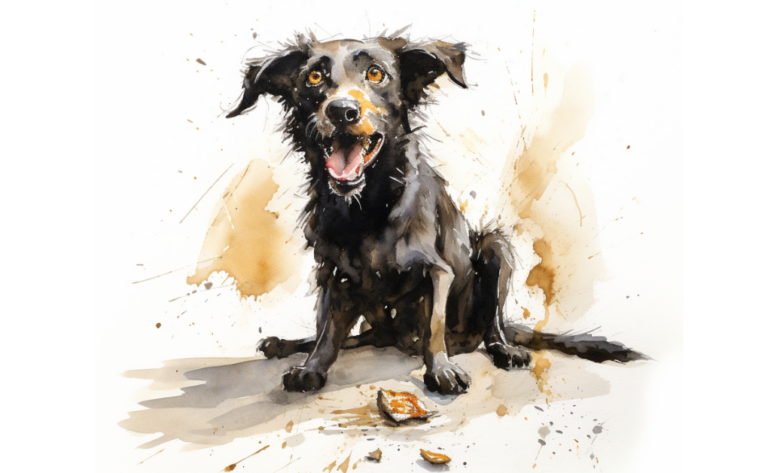Urethral Obstructions in Dogs: Causes, Symptoms, Treatment
What is it?
How is it Treated?
Breed Predispositions
Certain dog breeds are predisposed to urethral obstructions due to their genetic makeup, with Dalmatians, English Bulldogs, and Miniature Schnauzers being among the most commonly affected.
Urethral obstructions in dogs are a serious and potentially life-threatening condition that can strike fear into the hearts of pet owners. Imagine your beloved canine companion struggling to urinate, writhing in pain, and possibly facing dire consequences if left untreated. The urgency to recognize the symptoms, understand the causes, and seek prompt veterinary care cannot be stressed enough. In this comprehensive guide, we’ll delve into the world of urethral obstructions in dogs, exploring the general symptoms, diagnostic methods, treatment options, and preventative measures that every responsible pet owner should know. By equipping yourself with this knowledge, you can act swiftly and decisively, ensuring your furry friend remains healthy and happy throughout their life.
Causes of Urethral Obstruction in Dogs
Urethral obstruction in dogs can occur due to a variety of factors. These include:
1. Uroliths or Urinary Stones: One of the most common causes of urethral obstruction in dogs is uroliths or urinary stones. These are hard, stone-like formations that develop in the urinary tract. When they reach the urethra, they can cause blockages. Uroliths can be caused by a variety of factors including diet, genetics, and infections.
2. Tumors: Another common cause of urethral obstruction in dogs is the growth of tumors. These can be benign or malignant and can physically obstruct the urethra, causing difficulty or inability to urinate.
3. Urethral Stricture: This is a condition where a part of the urethra narrows due to inflammation, injury, or scar tissue. The narrowed part of the urethra can cause a partial or complete blockage, leading to urethral obstruction.
4. Prostate Disease: In male dogs, diseases of the prostate gland, such as benign prostatic hyperplasia, prostatitis, or prostate cancer, can cause a urethral obstruction. The enlarged or inflamed prostate gland can press on the urethra, leading to obstruction.
5. Trauma: Any injury to the lower abdominal area can cause a urethral obstruction. This could be due to an accident, a surgical procedure, or a catheterization that leads to inflammation or scar tissue.
Each of these factors can contribute to urethral obstruction in dogs. It’s crucial to identify the exact cause to ensure the correct treatment and management of the condition. If your dog shows symptoms of urethral obstruction, such as difficulty urinating, frequent attempts to urinate with little success, or painful urination, it’s important to seek veterinary care promptly.
Clinical Signs of Urethral Obstructions in Dogs
General Symptoms
If you’re a dog owner, you must be aware of the general symptoms associated with urethral obstructions in dogs. Recognizing these signs can differentiate between a swift recovery and a potentially life-threatening situation.
One of the most notable symptoms is straining to urinate. You may notice your dog taking longer than usual to pee or trying to urinate without producing any urine. This is often a clear sign of an obstruction in the urethra, making it difficult for your pet to empty its bladder.

Another common symptom is the production of frequent and small amounts of urine. While frequent urination is not necessarily a cause for concern, combined with other symptoms, it may indicate a urethral obstruction.
The presence of blood in the urine or hematuria is also a significant warning sign. Blood in the urine generally indicates inflammation or damage in the urinary tract, which an obstruction can cause.
Excessive licking of the genital area is another symptom that should not be overlooked. If your dog is continuously grooming or licking this area, it could be a response to the discomfort caused by an obstruction.
Urethral obstructions can also cause abdominal pain and discomfort. Your dog might show discomfort when picked up or adopt a hunched posture. They might also show reduced interest in physical activities they usually enjoy.
Loss of appetite is a common symptom seen in dogs with urethral obstructions. A dog that is experiencing discomfort or pain may lose interest in food. This symptom, combined with lethargy or depression, can indicate that your dog is unwell and needs veterinary attention.
Lastly, it’s worth noting that urethral obstructions are more common in male dogs. The urethra in males is longer and narrower than in females, making it more susceptible to blockages. If your male dog shows any symptoms described above, it’s vital to seek veterinary care immediately.
In conclusion, understanding and recognizing these general symptoms of urethral obstructions in dogs can help you to act quickly, ensuring your furry friend gets the medical attention they need.
Breed-Specific Symptoms
Certain dog breeds are predisposed to developing urethral obstructions due to their unique physiological traits, and may display breed-specific symptoms that owners need to watch out for.
Dalmatians, for instance, are prone to developing urate stones due to a unique metabolic trait that makes them excrete uric acid, a precursor of urate stones, in their urine. Owners might notice their Dalmatians straining to urinate more frequently or producing smaller amounts of urine than usual.
English Bulldogs, on the other hand, are genetically predisposed to form calcium oxalate stones, one of the most common types of urinary stones in dogs. These stones can cause a urethral obstruction, leading to symptoms such as blood in the urine or excessive licking of the genital area due to discomfort.
Bichon Frises, Shih Tzus, and Miniature Schnauzers are among the small dog breeds that are more likely to develop urinary stones, which can lead to urethral obstructions. These breeds may show signs of abdominal pain and discomfort or display behavioral changes such as loss of appetite, lethargy, and depression.
Male dogs, regardless of breed, are generally at a higher risk of urethral obstructions due to their narrower and longer urethras compared to females. Owners of male dogs should thus be particularly vigilant for any changes in their pets’ urination habits or behavior.
Older dogs of all breeds are more prone to developing urethral obstructions due to age-related changes in their urinary system, and may therefore display symptoms associated with this condition.
It’s worth noting that while these symptoms may be more common in certain breeds, any dog, regardless of breed or gender, can develop a urethral obstruction. Therefore, it’s important for all dog owners to be aware of these symptoms and to seek immediate veterinary care if they suspect their pet may have a urethral obstruction.
Diagnosis of Urethral Obstructions in Dogs
A prompt and accurate diagnosis is critical in managing urethral obstructions in dogs. The diagnostic process usually involves a combination of a thorough physical examination and various diagnostic tests.
Physical Examination
The first step in diagnosing a urethral obstruction is a comprehensive physical examination of the dog. The veterinarian will look for signs of discomfort, assess your dog’s overall health, and focus on the abdominal and genital areas.
Abdominal palpation is typically conducted to assess the size and shape of the bladder. A distended or firm bladder could be indicative of a urinary obstruction. The vet might also be able to feel any large stones or masses in the bladder or urethra that could be causing the obstruction.
A rectal examination is also part of the physical examination. This procedure allows the vet to feel the urethra and prostate gland (in males) for any abnormalities that could be causing the urinary obstruction.
Finally, a genital examination is performed to check for any external signs of disease, such as inflammation, discharge, or lesions that might contribute to the urinary obstruction.
Diagnostic Tests

Once the physical examination is completed, the vet will likely recommend a series of diagnostic tests to confirm the presence of urethral obstruction and to understand its underlying cause.
Urinalysis is a standard test for diagnosing urinary issues. It involves the examination of a urine sample to check for abnormalities, such as the presence of blood, crystals, bacteria, or abnormal cells.
Blood tests can reveal whether the obstruction has led to systemic issues like kidney damage or electrolyte imbalances. These tests can provide valuable information about your dog’s overall health and body response to the obstruction.
Radiographs (X-rays) are often used to visualize the urinary tract and identify obstructions, and they can reveal stones, tumors, or other masses blocking the urethra.
An ultrasound may also be a non-invasive way to get a detailed look at the bladder and urethra. This imaging technique can help identify stones, tumors, or other abnormalities that may not be visible on an X-ray.
Lastly, in some instances, a cystoscopy might be performed. This procedure involves the insertion of a thin tube with a camera into the urethra to visualize the interior of the urinary tract directly. This can help identify blockages or abnormalities that other tests might miss.
In conclusion, diagnosing urethral obstructions in dogs involves a comprehensive approach that combines a thorough physical examination and a variety of diagnostic tests. The results of these procedures guide the veterinarian in devising the most effective treatment plan for your pet.
Treatment of Urethral Obstructions in Dogs
The treatment for urethral obstructions in dogs is typically tailored to the specific cause of the obstruction and the dog’s overall health. Treatment options can be categorized into two main approaches: medical management and surgical management.
Medical Management
Medical management forms the first line of treatment for urethral obstructions, particularly if the obstruction is not severe or surgery is considered too risky for the dog.
Intravenous fluids are often administered to hydrate the dog and help flush out any small stones or sediment that might be causing the obstruction.
Pain management is also an essential part of treatment. Medications may be given to relieve pain and make your dog more comfortable.
If a urinary tract infection is present, antibiotics will be prescribed to treat the infection and prevent it from spreading.
In some cases, certain types of stones, such as urate stones seen in Dalmatians, can be dissolved with specific medications. This process can take weeks or even months but may be an option if the stones are not causing a complete obstruction.
Surgical Management
If medical management is unsuccessful, or if the obstruction is severe, surgical management may be necessary to relieve the obstruction.
One procedure is hydropulsion, which involves using a sterile saline solution to flush the stones back into the bladder. Once the stones are in the bladder, they can be removed through surgery. This method can be beneficial for small stones lodged in the urethra.
The placement of a urethral catheter can also be used to help dislodge a blockage. The catheter is gently passed into the urethra to push the obstructing material back into the bladder, where it can be more easily dealt with.
Sometimes, the stones may need to be removed directly from the bladder or urethra through surgery. This might involve a procedure called a cystotomy, which is the surgical opening of the bladder to remove stones.
A perineal urethrostomy or scrotal urethrostomy may be performed in persistent or recurring cases. These procedures create a new, wider opening for urine to exit the body, which can help prevent future obstructions.
Lastly, urethral stent placement may be considered in some cases. This procedure, typically performed by veterinary surgeons, involves inserting a small tube into the urethra to keep it open and allow urine to flow freely.
In conclusion, treatment for urethral obstructions in dogs depends on the cause and severity of the obstruction. Working closely with your veterinarian is essential to choose the best treatment option for your dog.
Prevention of Urethral Obstructions in Dogs
Maintaining their overall health and wellness is the key to preventing urethral obstructions in dogs. This can be achieved by focusing on their diet and nutrition, scheduling regular veterinary checkups, and considering the role of environmental factors and breed-specific preventative measures.
Diet and Nutrition
Diet and nutrition play a significant role in preventing urethral obstructions. Feeding a balanced diet can help ensure your dog gets the right amount of nutrients and prevent the formation of urinary stones.
Ensuring adequate water intake is also vital as it promotes regular urination and helps flush out the urinary tract.
Special diets may be recommended for breeds prone to specific types of stones, like Dalmatians and English Bulldogs. For instance, a low purine diet can help prevent urate stones in Dalmatians, while diets low in oxalates may help reduce calcium oxalate stone formation in English Bulldogs.
Regular Veterinary Checkups
Regular veterinary checkups are crucial in the early detection and prevention of urinary issues. Standard urine tests can help identify any abnormalities before they lead to obstructions.
Veterinarians will also monitor for early signs of urinary tract infections, bladder infections, and kidney failure, which could lead to obstructions if left untreated.
Environmental Factors
Environmental factors also have a role in preventing urethral obstructions. Encouraging regular urination can help flush out the urinary tract and decrease the likelihood of stone formation.
Maintaining a healthy weight is crucial, as obesity can contribute to urinary health issues.
Breed-Specific Preventative Measures
For some breeds, specific preventative measures may be necessary. For instance, monitoring for prostatic disease in male dogs can help prevent obstructions associated with this condition.
Regularly checking for urinary incontinence in female dogs can help identify potential issues early on.
In conclusion, prevention of urethral obstructions in dogs involves a multi-faceted approach. By focusing on diet, regular veterinary care, a healthy environment, and breed-specific preventative measures, you can significantly reduce the likelihood of your dog experiencing a urethral obstruction.
Disclaimer: The information provided on this veterinary website is intended for general educational purposes only and should not be considered as a substitute for professional veterinary advice, diagnosis, or treatment. Always consult a licensed veterinarian for any concerns or questions regarding the health and well-being of your pet. This website does not claim to cover every possible situation or provide exhaustive knowledge on the subjects presented. The owners and contributors of this website are not responsible for any harm or loss that may result from the use or misuse of the information provided herein.







